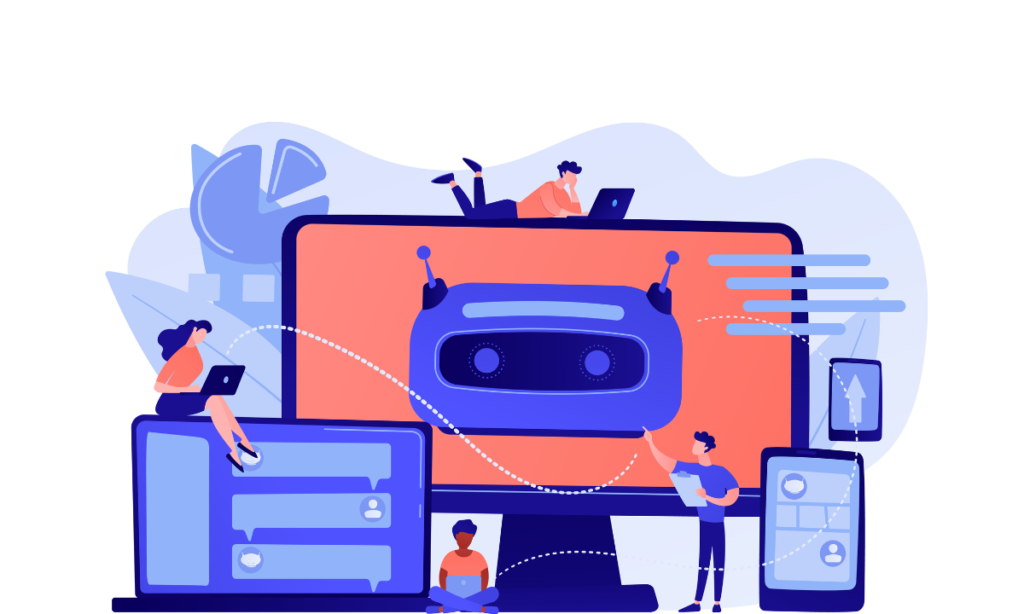
Best Digital Marketing Training Institutes in Bangalore Home Institutes Best Digital Marketing Training Institute in Bangalore In today’s digital age, having a …
Best Digital Marketing Training Institutes in Bangalore Home Institutes Best Digital Marketing Training Institute in Bangalore In today’s digital age, having a …
Best 5 Email Marketing Tools for Startups Home Youtube Thumbnail Best 5 Email Marketing Tools for Startups Best 5 Email Marketing Tools …
AMAZON PRODUCTS Top 10 Best Tripods For DSLR Camera Are you searching for good tripods for DSLR cameras? This article talks about …
AMAZON PRODUCTS Best DSLR Cameras In India Are you searching for a best DSLR cameras in india? This article talks about 10 …
AMAZON PRODUCTS Best Laptops For Video Editing Are you searching for a good laptop for editing videos? This article talks about 10 …

The digital marketing industry in India has experienced remarkable growth in recent years. This growth can be attributed to rapid technological advancements and the widespread adoption of smartphones, which have collectively fuelled the evolution of digital marketing in India.
In this blog, we’re excited to shed light on some most significant trends that will shape the industry in 2024. These trends are not just noteworthy; they are the ones to keep a close eye on as they have the potential to greatly impact how businesses market their products and services in the coming year.

Voice search has been a hot topic for a while, and it’s here to stay. People love using it because it’s quick and easy.
Did you know that 71% of people prefer talking to their devices instead of typing? Plus, lots of households in the U.S. now have smart speakers like Alexa or Google Home. According to Statista, there will be 8 billion voice assistants in use worldwide by 2024.
As more people use voice search, it’s crucial to make sure your website shows up when they ask their virtual assistants for help. You want to be the answer they get!
The good news is that the SEO (Search Engine Optimization) community has figured out ways to make your website voice-search-friendly. We’ll show you how!

AI (Artificial Intelligence) and machine learning are revolutionizing the landscape of digital marketing, opening up exciting possibilities for businesses to connect with their audience in more meaningful ways.
Personalized Content Recommendations: AI algorithms analyse user behaviour and preferences to deliver highly personalized content recommendations.
For instance, streaming platforms like Netflix and music services like Spotify use AI to suggest movies, shows, or songs based on individual viewing or listening history.
Predictive Analytics: Machine learning models can predict future trends and customer behaviour based on historical data.
This allows businesses to anticipate consumer needs and preferences.
For example, e-commerce platforms use predictive analytics to recommend products customers are likely to purchase.
Chatbots and Virtual Assistants: AI-driven chatbots and virtual assistants provide instant customer support, answer queries, and even assist in making purchase decisions. They enhance user experience by providing quick and relevant responses 24/7.
Marketing Automation: AI-powered marketing automation tools streamline repetitive tasks, such as email marketing and social media posting. They can segment audiences, schedule content, and even personalize messages for better engagement.
Content Creation: Some AI tools can generate content, including articles, reports, and social media posts. While these tools aren’t replacing human creativity, they can be used to assist content creators and speed up the content generation process.

The new “E” in E-E-A-T stands for “experience,” and it’s all about valuing real-life knowledge on the topic a webpage is discussing.
This “E” matters because when people search for something, like buying a product or using a service, they often want information from someone who has actually experienced it.
So, Google tends to favour webpages where the author has first-hand experience with what they’re writing about. For instance, if someone is writing a review about an iPhone, they should have actually used the phone. Or if they’re talking about the best restaurants in San Francisco, they need to have visited those places. This way, Google aims to provide more trustworthy and helpful information to users.

Interactive content is gaining popularity as a new trend in digital marketing for several compelling reasons:
Enhanced Engagement: Interactive content actively involves users, encouraging them to participate rather than passively consume.
This engagement leads to longer on-page time, increased interaction rates, and a more memorable user experience.
Improved Information Retention: Interactivity stimulates cognitive processes, making it easier for users to absorb and retain information. This is especially important in educational or informative content.
Personalization: Interactive content often allows for customization. Users can tailor their experience to their preferences, making the content more relevant and engaging.
Data Collection: Interactive content can be used to collect valuable data and insights about user preferences, behaviours, and opinions. This data can inform future marketing strategies and product development.
Higher Conversion Rates: Interactive content can lead to higher conversion rates. For example, interactive quizzes or assessments can help qualify leads and guide them toward relevant products or services.
Social Sharing: Interactive content is highly shareable on social media platforms. Users are more likely to share quizzes, polls, or interactive infographics, extending the content’s reach and virality.
Gamification: Gamified interactive content adds an element of competition and fun, motivating users to engage and return for more interactions.
Storytelling: Interactive storytelling techniques, such as choose-your-own-adventure content, immerse users in narratives, making them active participants in the story’s outcome.

You’ve probably seen posts from influencers saying “AD” when they’re promoting something. At first, this was a cool way to use social media to advertise in a more relatable way.
But over time, it started feeling like regular ads because brands were too controlling, making the influencer’s posts look fake and different from their usual content.
Nowadays, we have something called “creator marketing.” It’s different from influencer marketing because it’s not just about how famous someone is.
Creator marketing is all about teaming up with content creators to make more people aware of your brand and get them engaged in special projects. It’s not just about one post; it’s a bigger plan to use these creators to help you reach your marketing goals.
Creator marketing lets individuals use their creativity and credibility to promote things. In creator marketing, brands give more freedom to the person creating the content instead of controlling everything.
When you use creator marketing in your social media plan, it can make your messages reach more people, get more people interested in what you’re doing, and let you become a part of new communities in a genuine and real way.
Don’t miss our future updates! Get Subscribed Today!
Copyright ©2023. All Rights Reserved.